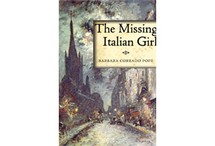The Missing Italian Girl: A Mystery in Paris
By Barbara Corrado Pope
384 pages;
Pegasus
Paris, 1897: France is bursting with Republican fervor and a plethora of initiatives for the promotion of so-called social equality. Enter Clarie Martin, wife, mother and schoolteacher. Clarie considers herself fortunate: Her husband, a former judge and now a labor union lawyer, supports her career teaching history at a prestigious girls' school. But when one of the lycée's "charwomen" (translation: fire builder), Francesca Laurenzano, asks Clarie to help find her two missing daughters, Clarie runs up against the limits of her husband's modern-mindedness. It's one thing for her to do something respectable, like teach. It's another to run around looking for a murderer. Clarie tries to submit to her husband's wishes, though she grumbles to herself, wondering: "Where were all those Republican men with their high-flown rhetoric about equality and justice when it came to these girls?" But when one daughter turns up dead and it seems that the other will be the killer's next victim, Clarie's sense of justice takes over, and she charges headlong into a clandestine investigation. Author Barbara Corrado Pope plots Clarie's search with precision and restraint, giving just enough detail to move the events along but never to the degree that the ending is obvious. The true draw here, though, is not so much the mystery as its portrait of women—and their not-so-equal rights—at the turn of the last century. Clarie, too, is a wonderfully engaging heroine. Her love for her family, her intellectual integrity and her stubbornness prove that even in the face of senseless limitations, it's possible to find joy, truth—and even oneself.
— Nathalie Gorman


